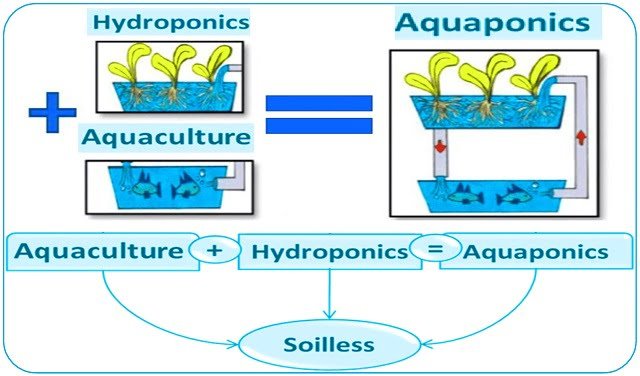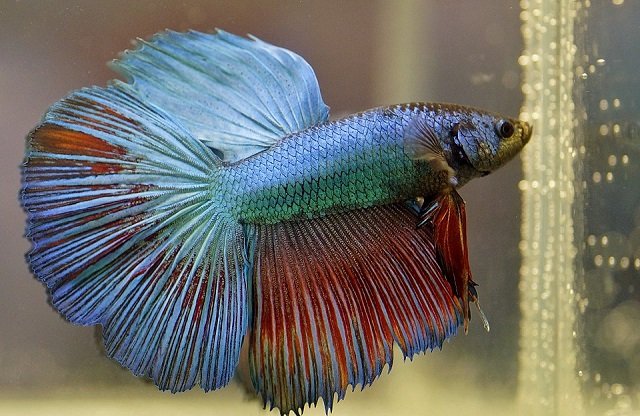
Fish ponds, as intricate artificial ecosystems, have been integrated into the European landscape for centuries. These aquatic systems play a crucial role in maintaining ecological balance, contributing to biodiversity, and supporting local economies. However, challenges like eutrophication have impacted the health and productivity of many fish ponds.
In this context, cascading ponds, a network of interconnected ponds, have long been recognized for their role in aquaculture. However, their potential as multifunctional ecosystems, capable of providing a variety of ecological and economic benefits, is often overlooked.
A study published in Aquacultural Engineering by scientists from the University of South Bohemia and Štičí líheň – ESOX in South Bohemia, Czech Republic, delved into the complexities of a cascading pond system integrated into an agricultural landscape.
The Power of Cascading Ponds
Cascading ponds for fish farming are a type of artificial ecosystem consisting of multiple interconnected ponds. These systems have been used for centuries in Central and Eastern Europe, where they are an essential part of the aquaculture industry.
By strategically managing water flow and fish populations, cascading pond systems can optimize the nutrient cycle, promote zooplankton growth, and create ideal conditions for the development of fingerlings.
Production of “Advanced Fingerlings”
The production of advanced fingerlings, a fundamental aspect of aquaculture, is a key component of cascading fish ponds. Advanced fingerlings are small fish harvested a few weeks after stocking and used as a food source for larger fish.
Main Benefits of Cascading Ponds
The benefits of cascading fish ponds are numerous. Here is a summary of the main advantages:
Nutrient Recirculation and Removal:
Stay Always Informed
Join our communities to instantly receive the most important news, reports, and analysis from the aquaculture industry.
- Nutrient-rich water from upstream ponds is filtered and purified as it flows through the cascade.
- Fish, particularly zooplankton feeders, help remove excess nutrients, reducing the risk of eutrophication.
- Sedimentation and microbial processes further contribute to nutrient removal.
Zooplankton Dynamics and Fish Growth:
- The cascading system creates a dynamic environment that favors the growth of various zooplankton species, including Daphnia, Bosmina, and copepods.
- This zooplankton serves as a high-quality food source for fingerlings, promoting rapid growth and development.
- By carefully managing fish restocking and harvesting, fish farmers can optimize zooplankton populations and enhance fish production.
Efficient Aquaculture Production:
- Cascading systems allow the implementation of intensive aquaculture practices, such as multiple stocking and harvesting cycles.
- This enables higher production yields and better pond space utilization.
- The controlled environment of the cascade can reduce disease outbreaks and improve fish survival rates.
Environmental Sustainability:
- By minimizing the use of artificial inputs, such as fertilizers and antibiotics, cascading systems can contribute to a more sustainable aquaculture industry.
- The ecological benefits of cascading ponds, including improved water quality and habitat creation, can help restore and maintain healthy aquatic ecosystems.
A Self-Sustaining Ecosystem
The study focused on a cascade of four interconnected ponds, each covering an area of 1 to 3 hectares and maintaining an average depth of 1 meter. The ponds operated using a batch release and recharge system, with no additional fertilization or feeding. Despite these minimal inputs, the cascade demonstrated a remarkable self-purifying capacity, effectively recycling and removing nutrients.
Nutrient Cycles and Water Quality
The researchers observed a significant reduction in nutrient concentrations as water flowed through the cascade. Total phosphorus and nitrogen levels in the final pond were, on average, 55% and 61% lower, respectively, than in the initial pond. This reduction can be attributed to several ecological processes, including sedimentation, plant absorption, and microbial activity.
Zooplankton Dynamics and Fish Production
Zooplankton communities within the ponds exhibited seasonal patterns, with microcrustaceans, particularly Daphnia spp., dominating the assemblages. This zooplankton served as a crucial food source for the early life stages of predatory fish.
To maximize fish production, a multiple-stocking-multiple-harvesting (MSMH) strategy was employed. Although fingerling survival rates were relatively low (3-16%), the MSMH approach produced substantial ecological and economic benefits. By harvesting fish at different life stages, the system could maintain a continuous production flow, ensuring a stable income for fish farmers.
The Potential of Cascading Ponds
The findings of this study highlight the potential of cascading pond systems to contribute to sustainable aquaculture and environmental restoration. By integrating these systems into agricultural landscapes, it is possible to:
- Improve Water Quality: Reduce nutrient pollution and enhance water quality.
- Promote Biodiversity: Create habitats for a wide range of aquatic organisms.
- Support Local Economies: Provide sustainable livelihoods for fish farmers.
- Preserve Cultural Heritage: Maintain traditional aquaculture practices.
Conclusion
In conclusion, the study demonstrates the potential of cascading fish ponds as an ecological engineering concept that unites aquaculture and sustainable landscape development. By adopting this innovative approach, farmers and conservationists can work together to create a more sustainable and environmentally friendly food system.
As the study authors encourage, where local conditions allow, establishing cascading pond systems is an attractive solution to promote ecological and economic benefits.
The study was funded by the National Agency for Agricultural Research.
Contact
Lenka Kajgrová
University of South Bohemia in Ceske Budejovice, Faculty of Fisheries and Protection of Waters, South Bohemian Research Center of Aquaculture and Biodiversity of Hydrocenoses, Institute of Aquaculture and Protection of Waters
Na Sádkách 1780, 370 05 České Budějovice, Czech Republic.
Email: kajgrova@frov.jcu.cz
Reference (open access)
Kajgrová, L., Pecha, O., Roy, K., Dvořák, J., Let, M., Potužák, J., Vrba, J., & Bláha, M. (2024). Pond cascades as a tool for ecological aquaculture allowing natural zooplankton succession, nutrient retention, and multiple stocking–harvesting cycles. Aquacultural Engineering, 104, 102374. https://doi.org/10.1016/j.aquaeng.2023.102374
Editor at the digital magazine AquaHoy. He holds a degree in Aquaculture Biology from the National University of Santa (UNS) and a Master’s degree in Science and Innovation Management from the Polytechnic University of Valencia, with postgraduate diplomas in Business Innovation and Innovation Management. He possesses extensive experience in the aquaculture and fisheries sector, having led the Fisheries Innovation Unit of the National Program for Innovation in Fisheries and Aquaculture (PNIPA). He has served as a senior consultant in technology watch, an innovation project formulator and advisor, and a lecturer at UNS. He is a member of the Peruvian College of Biologists and was recognized by the World Aquaculture Society (WAS) in 2016 for his contribution to aquaculture.




